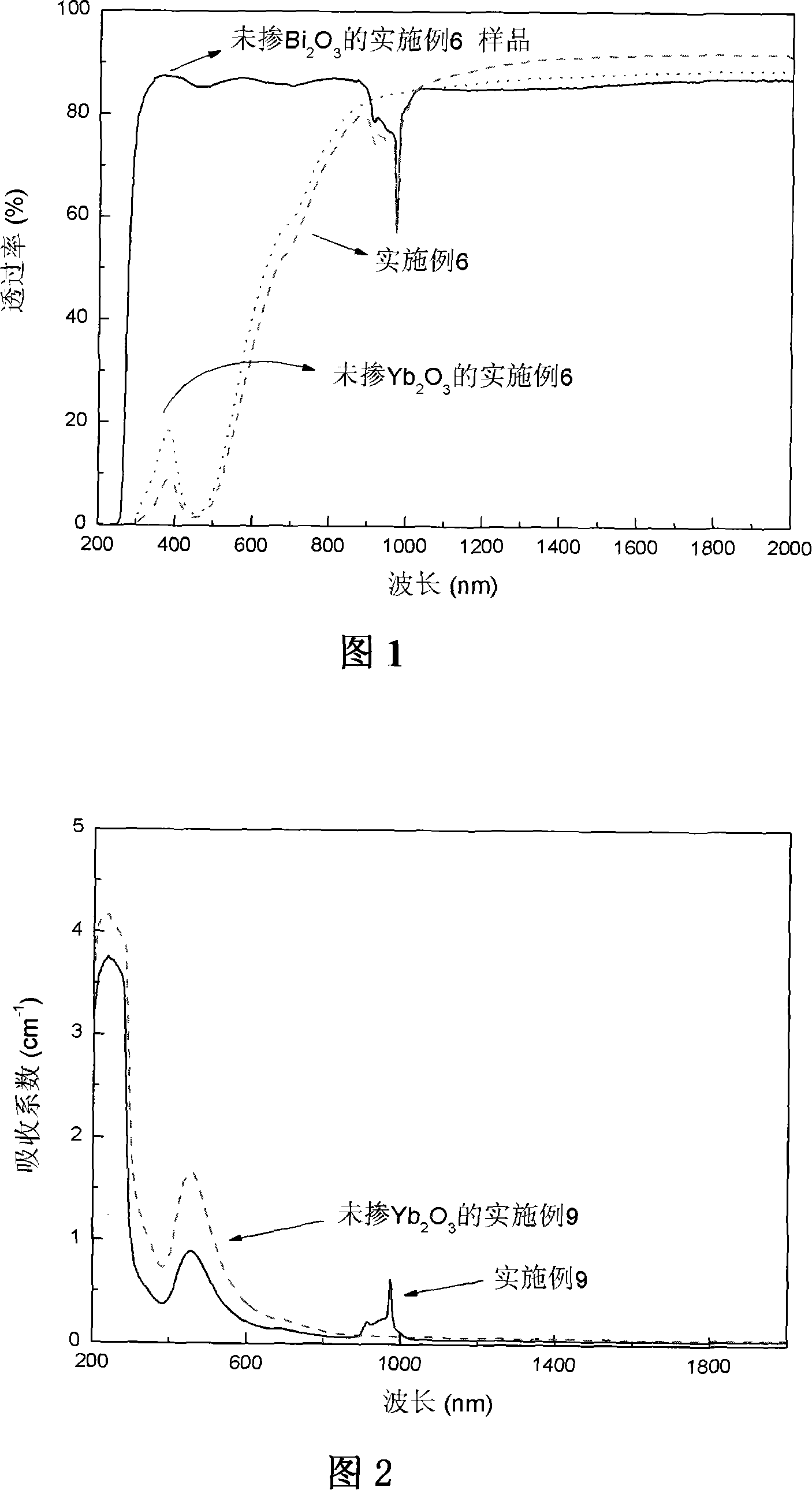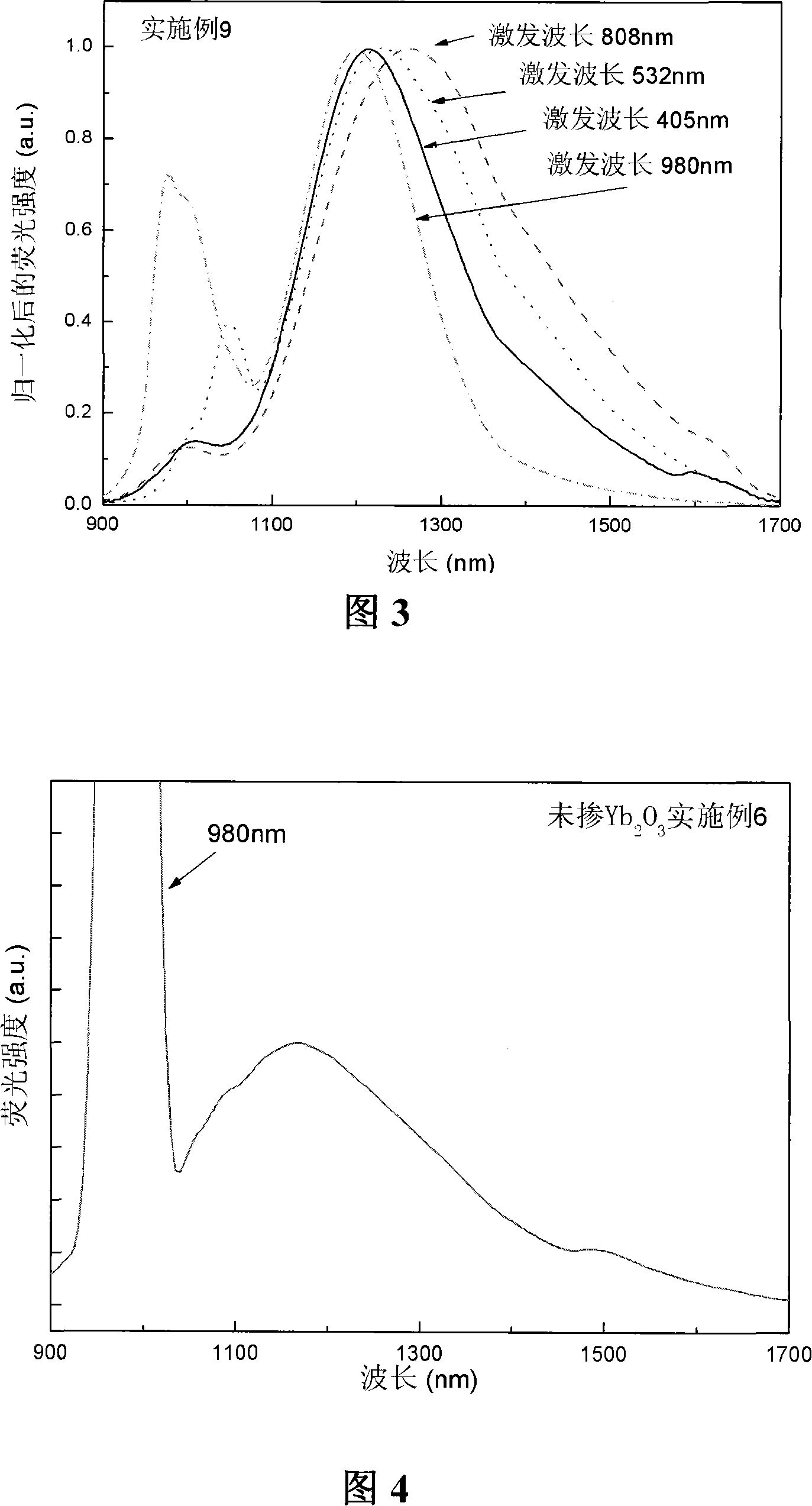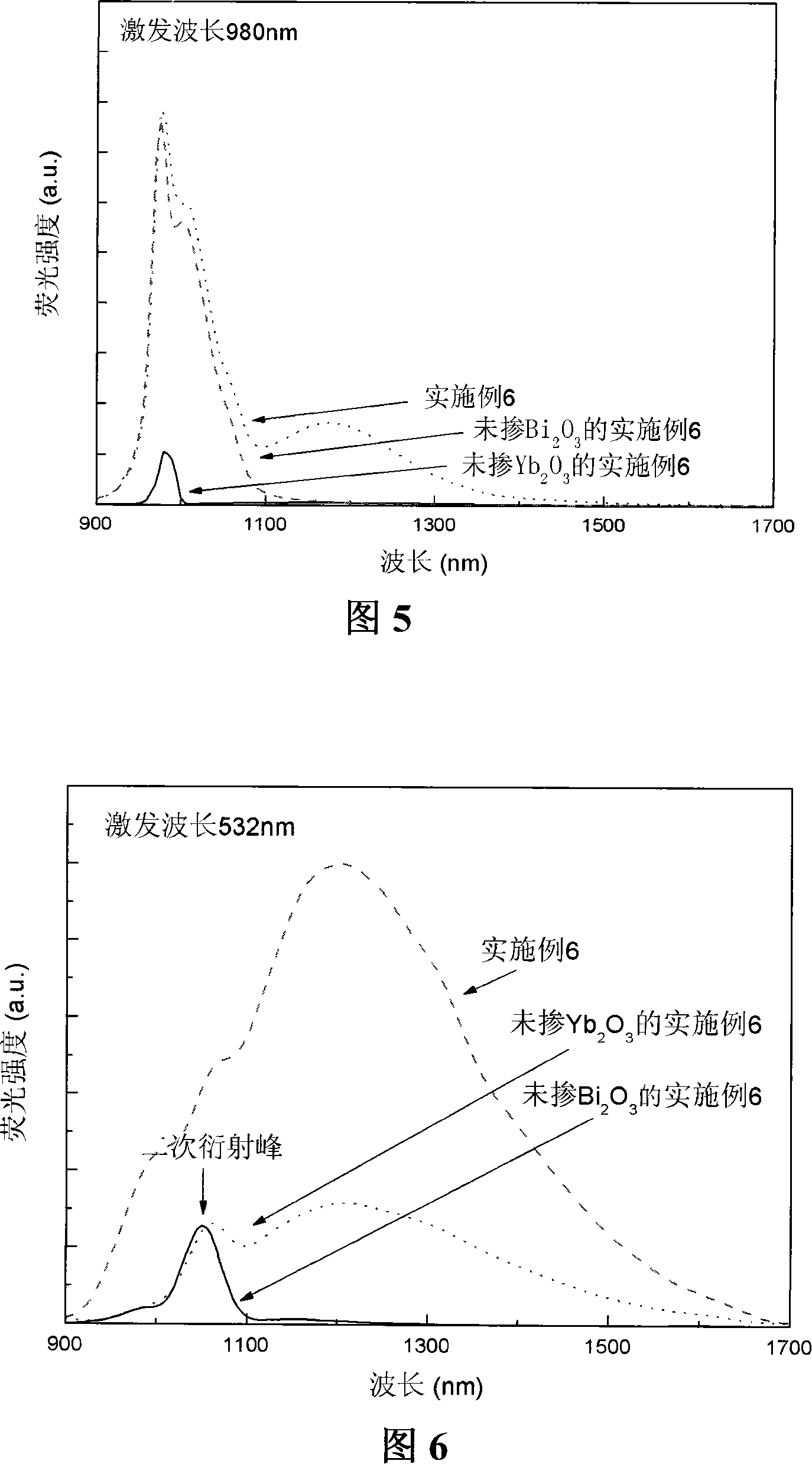Ytterbium-bismuth co-doped phosphonate based optical glass and method for making same
An optical glass and phosphate technology, applied in the field of optical glass, can solve the problems of inability to obtain strong luminescence performance and gain effect, and achieve the effects of strong near-infrared fluorescence emission and simple preparation process
- Summary
- Abstract
- Description
- Claims
- Application Information
AI Technical Summary
Problems solved by technology
Method used
Image
Examples
Embodiment 1
[0058] The preparation method of embodiment 1 is as follows:
[0059] Select analytically pure raw materials, weigh a total of 20 g of glass raw materials according to the proportion (mol%) of the first example in Table 1, grind and mix them uniformly in a mortar. And pre-fired at low temperature to release the moisture and useless gas components in the raw materials. After the raw materials are fully fired, grind again evenly, and melt in the air at 1400-1550°C, the raw materials are completely melted, homogenized, and clarified into glass liquid. Cool the melt down to a suitable viscosity, and pour it into a preheated grinding tool. After the sample was annealed at 500-600°C for 6 hours, it was cooled to room temperature with the furnace after the power was turned off. After the sample is polished, obvious absorption peaks can be observed around 455nm, 700nm and 980nm, and can generate infrared fluorescence emission across 1000-1600nm under different pump light excitation,...
Embodiment 2
[0060] The preparation method of embodiment 2 is as follows:
[0061] Select analytically pure raw materials, weigh a total of 20 g of glass raw materials according to the proportion (mol%) of the second example in Table 1, grind and mix them uniformly in a mortar. And pre-fired at low temperature to release the moisture and useless gas components in the raw materials. After the raw materials are fully fired, they are ground again evenly, and melted in a weak reducing atmosphere at 1400-1550°C. The reducing atmosphere is achieved by introducing stone mill powder. The raw materials are completely melted and homogenized to clarify into a glass liquid. Cool the melt down to a suitable viscosity, and pour it into a preheated grinding tool. After the sample was annealed at 400-500°C for 6 hours, it was cooled to room temperature with the furnace after the power was turned off. Obvious absorption peaks can be observed around 455nm, 700nm and 980nm, and can generate infrared fluore...
Embodiment 3-5 and 8
[0062] The preparation method of embodiment 3-5 and 8 is as follows:
[0063] Select analytically pure raw materials, according to the ratio (mol%) of No. 3-5 and No. 8 examples in Table 1, respectively weigh a total of 20g of glass raw materials, grind and mix them uniformly in a mortar. The sample was prepared with reference to the method of Preparation Example 1. Obvious absorption peaks can be observed in the sample near 455nm, 700nm and 980nm, and can generate infrared fluorescence emission across 1000-1600nm under different pump light excitations. It has longer fluorescence and longer fluorescence lifetime (as shown in Table 1 and Table 4).
PUM
 Login to View More
Login to View More Abstract
Description
Claims
Application Information
 Login to View More
Login to View More - R&D
- Intellectual Property
- Life Sciences
- Materials
- Tech Scout
- Unparalleled Data Quality
- Higher Quality Content
- 60% Fewer Hallucinations
Browse by: Latest US Patents, China's latest patents, Technical Efficacy Thesaurus, Application Domain, Technology Topic, Popular Technical Reports.
© 2025 PatSnap. All rights reserved.Legal|Privacy policy|Modern Slavery Act Transparency Statement|Sitemap|About US| Contact US: help@patsnap.com



